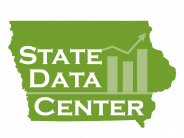Other Federal data sources
Annual Survey of Public Pensions
The Survey of Public Pensions: State- and Locally-Administered Defined Benefit Data provides revenues, expenditures, financial assets, and membership information for the defined benefit public pensions.
Annual Survey of State Government Tax Collections
The Annual Survey of State Government Tax Collections (STC) provides a summary of taxes collected by state for 5 broad tax categories and up to 25 tax subcategories.
Building Permits Survey
The purpose of the Building Permits Survey is to provide national, state, and local statistics on new privately-owned residential construction. The United States Code, Title 13, authorizes this survey, provides for voluntary responses, and provides an exception to confidentiality for public records.
County Business Patterns
County Business Patterns is an annual series that provides subnational economic data by industry. This series includes the number of establishments, employment during the week of March 12, first quarter payroll, and annual payroll.
Small Area Income and Poverty Estimates
The U.S. Census Bureau's Small Area Income and Poverty Estimates (SAIPE) program provides annual estimates of income and poverty statistics for all school districts, counties, and states. The main objective of this program is to provide estimates of income and poverty for the administration of federal programs and the allocation of federal funds to local jurisdictions. In addition to these federal programs, state and local programs use the income and poverty estimates for distributing funds and managing programs.
Bankruptcy Filing Statistics (United States Courts)
Voting and Registration
- Reported registration and voting by race and Hispanic origin
- Reported registration and voting by age
Yearbook of Immigration Statistics
The Yearbook of Immigration Statistics is a compendium of tables that provides data on foreign nationals who, during a fiscal year, were granted lawful permanent residence (i.e., admitted as immigrants or became legal permanent residents), were admitted into the United States on a temporary basis (e.g., tourists, students, or workers), applied for asylum or refugee status, or were naturalized.
